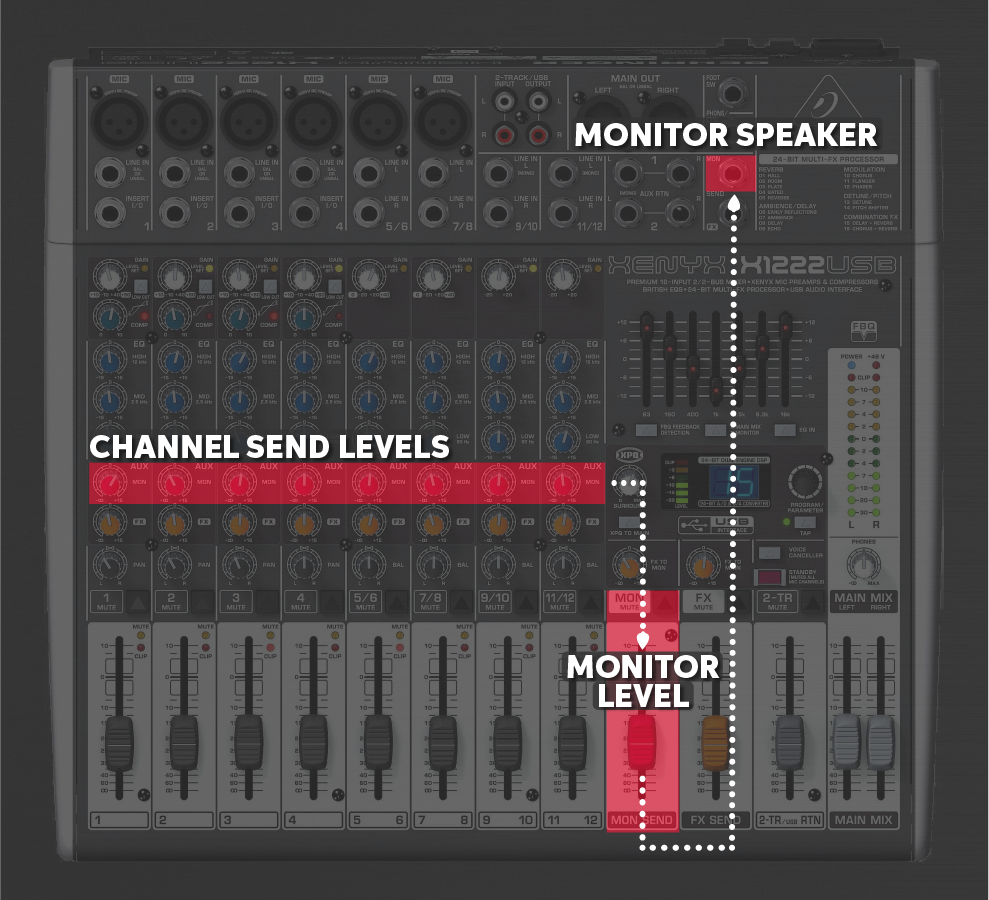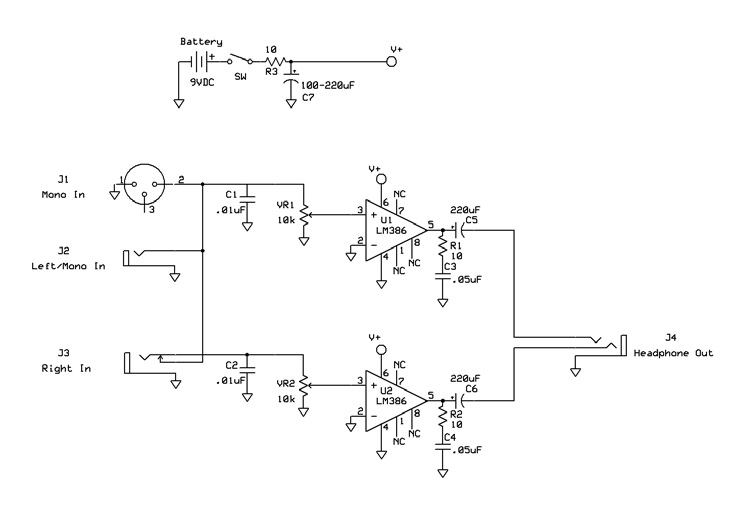Fifine Headphone Amplifier 4 Channels Metal Stereo Audio Amplifier,Mini Earphone Splitter with Power Adapter-4x Quarter Inch Balanced TRS Headphones Output and TRS Audio Input for Sound Mixer-N6 4.4 out of 5 stars 402. I'm shopping for a multiple input headphone amp for my Zoom H6. Seems like a lot of people like the Behringer HA400. I'm also seeing another model called the MX400 that declares itself to be low noise. Does anybody have any experience with these amps and if the MX is somehow a better version. An alternative to this would be to run line-out from one computer to line-in on the other computer. This allows the computers to share the same headphones without any of this driving issue. So you would have computer 1 and 2 Computer 1 line out to computer 2 line in Headphones on computer 2. Computer 2's line in has to be un-muted or set to listen. Connecting multiple inputs to one output: How can i connect my karaoke mixer with 3.5mm output jack to the soundbar without audio input port? Connecting digital audio of PC to soundbar from HDMI output to Optical input: my home theater is of i ball 2.1 which have audio input with 2 l and R how i connect with lg led tv. I connect but only one.
The best studio headphone amplifiers are not the overly expensive audiophile amps with exposed tubes and a dash of pixie dust. Those are for personal use designed to look magical enough to fool consumers into spending far more than remotely necessary. As us professionals know, the way a piece of studio gear looks has nothing to do with the audio quality it can produce...

A headphone mix (also known as the headphone monitor mix) is called upon when you’re recording a new track in the studio, to allow the recording musician to play along with the other instruments or vocalists that are being recorded at the same time (or to play along with the tracks that have already been recorded).
This mix is important as it can influence the quality of the performance and the recording.
Headphone Mix for Recording
The monitor mix lets the musician direct and control the tracks they would like to hear in their headphones during recording. So a vocalist might like to hear more of the kick and bass when they’re recording, but when a guitarist records, he may prefer to hear more of the other guitars.
To set up a headphone mix you’ll need a studio headphone amp, and the amp you use will determine how much control you have over your mix.
If you’re using an audio interface with only 2 outputs, then you’re limited in what you can do. The best small headphone amp for a home studio is the PreSonus HP4, giving you 4 headphone outputs. A typical layout would be like this:
You only have one stereo output feeding all four headphones, so the headphone mix would be the same as the main stereo mix in your DAW and it would also be the same for all four recording musicians. This kind of arrangement is usually fine for a home studio.

For more headphone outputs and more control over individual submixes, the PreSonus HP60 is a fantastic option. But to get the most out of it you would need to be using a larger interface, something like the PreSonus FireStudio Project. The FireStudio along with the HP60 would expand the potential of your studio and give you a lot more options with your recording.
Style of Headphones
To begin with, if you’re looking for good headphones to use in the studio, I’d recommend a closed-back pair. They let you use higher volume levels without risking spillage into the recordingmicrophones, which is especially important when recording vocals as the headphones will be close to the mic.
When it comes to choosing a closed-back pair, I’ve had excellent results with the Sennheiser HD 280 PRO headphones. They come very highly recommended for using in your home studio.
Headphone Mix with a Mixing Board

To create a headphone monitor mix, you use an aux send on each input channel on your mixing board. The send level on each aux send acts as the volume level of the track going to the headphones. You can adjust these volumes by talking to the musician or vocalist to see what they want in their mix.
Each of the aux sends being used should be set to pre-fade – this means that moving the main channel fader won’t affect the level being sent down the aux send. You only want the aux send faders to affect the volume level of each instrument or vocal in the monitor mix.
If pre-fade isn’t selected, the aux send is automatically set to post-fade – which means that if the main channel fader is moved, the level of the aux send is also affected. This isn’t what you want.
Monitor Mix Tips
There a few other important things to remember when thinking about a headphone mix.
- When recording a new track, mute the channel that you are recording to, so the musician doesn’t hear a copy of what they’re playing bouncing back to them from the computer.
- It’s common to find that most of these mixes will have the kick drum, snare drum, and bass levels quite high. It helps to keep the rhythm up-front and in focus when a new track is being recorded. Instruments like guitars or keyboards are usually slightly lower in the mix, but are still important for staying in tune and in key with the song.
- A mix for a vocalist usually requires a little reverb or maybe a little delay on the vocal track that’s being recorded, as it creates a slightly more natural sound compared to a completely dry signal that would otherwise be sent to the vocalist’s headphones. It can help them to sing in tune with the rest of the track.
Final Thoughts
Creating a headphone mix in your DAW (or on your desk) is pretty easy once you know how to do it. If you have the option to create these separate submixes, then they’re very useful to use if you need to record one or two musicians for one of your productions.

Even if you find that you don’t need to create a headphone monitor mix in your studio, I still think it’s a great skill and technique to have – you never know when you’ll need to use it.